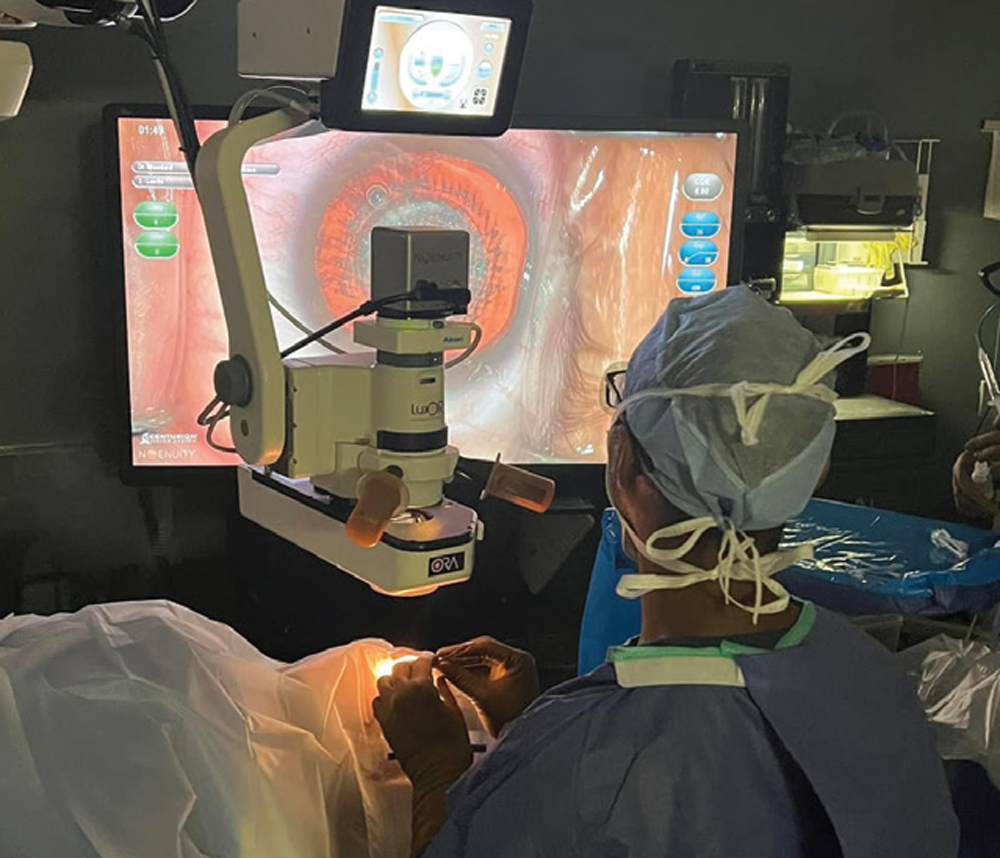 |
| While projections show that the number of full-time ophthalmologists will decrease by 2,650 between 2020 and 2035, the demand for these doctors will increase to 5,150, representing a supply and demand mismatch of 30%. Popular surgeries like cataract removal will be among the sectors hardest hit. Photo: Lawrence Woodard, MD. Click image to enlarge. |
Editor’s Note: As part of our “Year in Review” retrospective, we’ve selected the top 30 news stories of the year and are re-sharing them as we close out 2023. Follow along as we count down to number 1!
This story was originally published September 22, 2023.
No. 24 biggest news story of 2023:
Since the 1990s, the number of ophthalmologists practicing in the US has been trending downwards, while the demand for eyecare is simultaneously increasing due to the country’s aging population. In other words, as the number of patients climbs, the number of ophthalmologists drops, which could have major implications on the accessibility and availability of care.
A group of researchers recently evaluated ophthalmology workforce supply and demand projections between the years 2020 and 2035 to assess the potential trouble that lies ahead. Not unexpectedly, their data—obtained from the Health Resources and Services Administration website—forecasted a sizeable shortage of ophthalmology supply relative to demand by the year 2035.
Across the 15-year time span, the researchers reported that the total ophthalmology supply is projected to decrease by 2,650 full-time OMDs, equating to a 12% decline. Meanwhile, the total demand is projected to increase by 24%, or 5,150 full-time ophthalmologists, representing a supply and demand mismatch of 30% workforce inadequacy. If initiatives to improve access to eyecare are successful by 2035, this projected shortage could expand to 36%.
More densely populated areas, such as major cities, will be disproportionately impacted by the growing shortage of ophthalmologists, the researchers found, noting that by the year 2035, metro geographies will face 77% workforce inadequacy compared with 29% in nonmetro areas.
To hammer home the concerning reality of these numbers, the study authors pointed out in their Ophthalmology paper that by the year 2035 “ophthalmology is projected to have the second lowest rate of workforce adequacy (70%) out of 38 medical and surgical specialties studied.” Additionally, current projections suggest both optician and optometric workforces will also be inadequate by 2035, the paper states.
While the correlation between county-level ophthalmologist and optometrist availability requires further investigation, the researchers point out several potential consequences of the projected shortages. “There are known associations between ophthalmologist supply and eye health, which have been better demonstrated in specific geographies or for specific eye diseases,” they noted in their paper. “For example, access and utilization of diabetic eye care have been correlated with ophthalmologist supply. The prevalence of visual impairment was found to be inversely correlated with density of eyecare clinicians in California.”
Technological advancement could be one helpful solution to minimize workforce inadequacy in eyecare by enabling the use of telehealth and improving durability of ophthalmologic interventions, the researchers proposed. In addition to this, they go on to list numerous other factors that must be considered when forecasting eyecare supply and demand, including scope of practice, geographic trends, interconnectedness of allied professionals and the aging population and workforce.
In conclusion, the study authors urge that “further dedicated workforce supply and demand research for ophthalmology and other professionals is needed to help inform policy decisions and strategy to overcome projected workforce inadequacy.”
Berkowitz ST, Finn AP, Parikh R, Kuriyan AE, Patel S. Ophthalmology workforce projections in the United States, 2020-2035. Ophthalmology. September 13, 2023. [Epub ahead of print]. |

